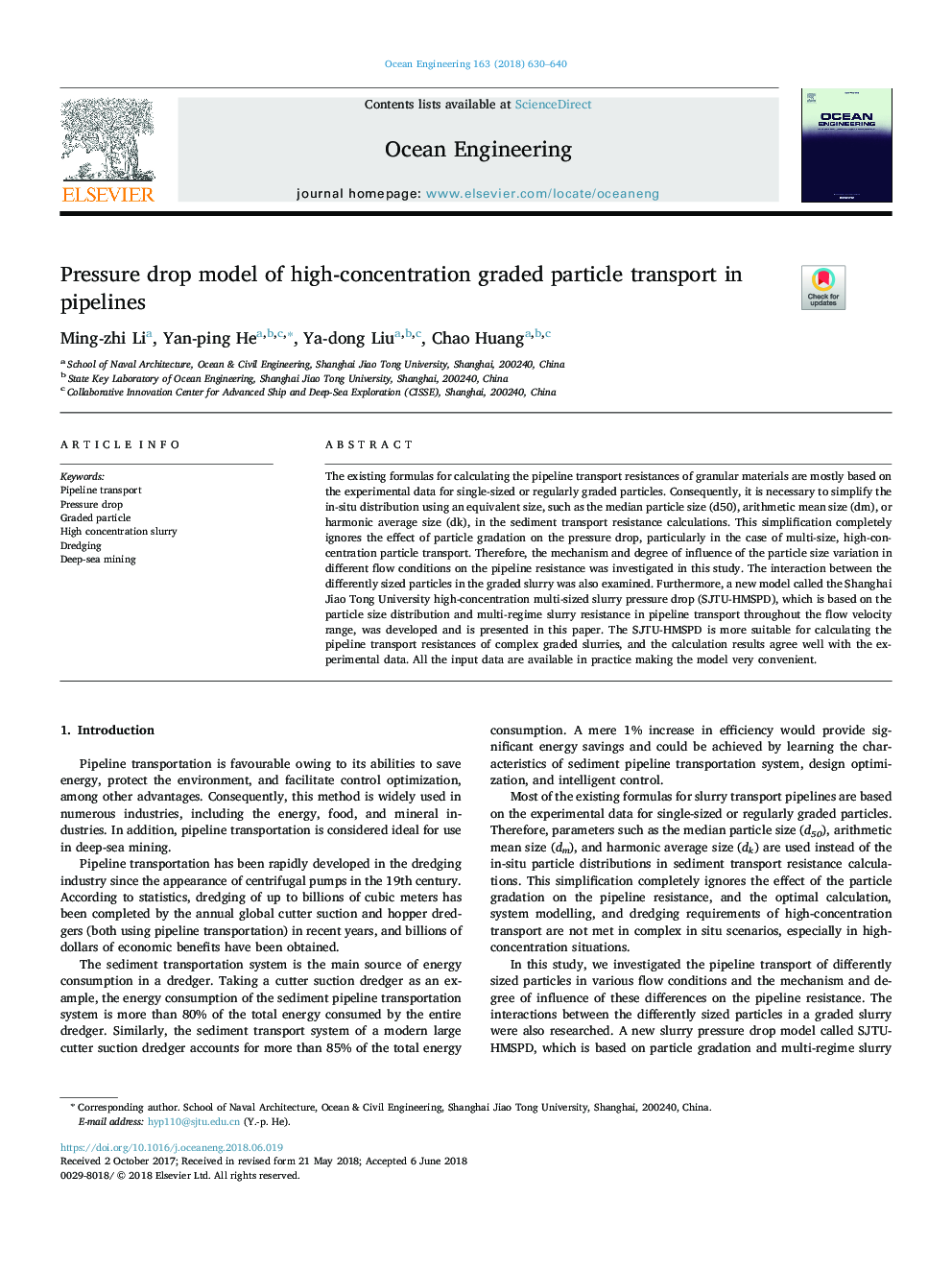| Article ID | Journal | Published Year | Pages | File Type |
|---|---|---|---|---|
| 8062069 | Ocean Engineering | 2018 | 11 Pages |
Abstract
The existing formulas for calculating the pipeline transport resistances of granular materials are mostly based on the experimental data for single-sized or regularly graded particles. Consequently, it is necessary to simplify the in-situ distribution using an equivalent size, such as the median particle size (d50), arithmetic mean size (dm), or harmonic average size (dk), in the sediment transport resistance calculations. This simplification completely ignores the effect of particle gradation on the pressure drop, particularly in the case of multi-size, high-concentration particle transport. Therefore, the mechanism and degree of influence of the particle size variation in different flow conditions on the pipeline resistance was investigated in this study. The interaction between the differently sized particles in the graded slurry was also examined. Furthermore, a new model called the Shanghai Jiao Tong University high-concentration multi-sized slurry pressure drop (SJTU-HMSPD), which is based on the particle size distribution and multi-regime slurry resistance in pipeline transport throughout the flow velocity range, was developed and is presented in this paper. The SJTU-HMSPD is more suitable for calculating the pipeline transport resistances of complex graded slurries, and the calculation results agree well with the experimental data. All the input data are available in practice making the model very convenient.
Related Topics
Physical Sciences and Engineering
Engineering
Ocean Engineering
Authors
Ming-zhi Li, Yan-ping He, Ya-dong Liu, Chao Huang,
